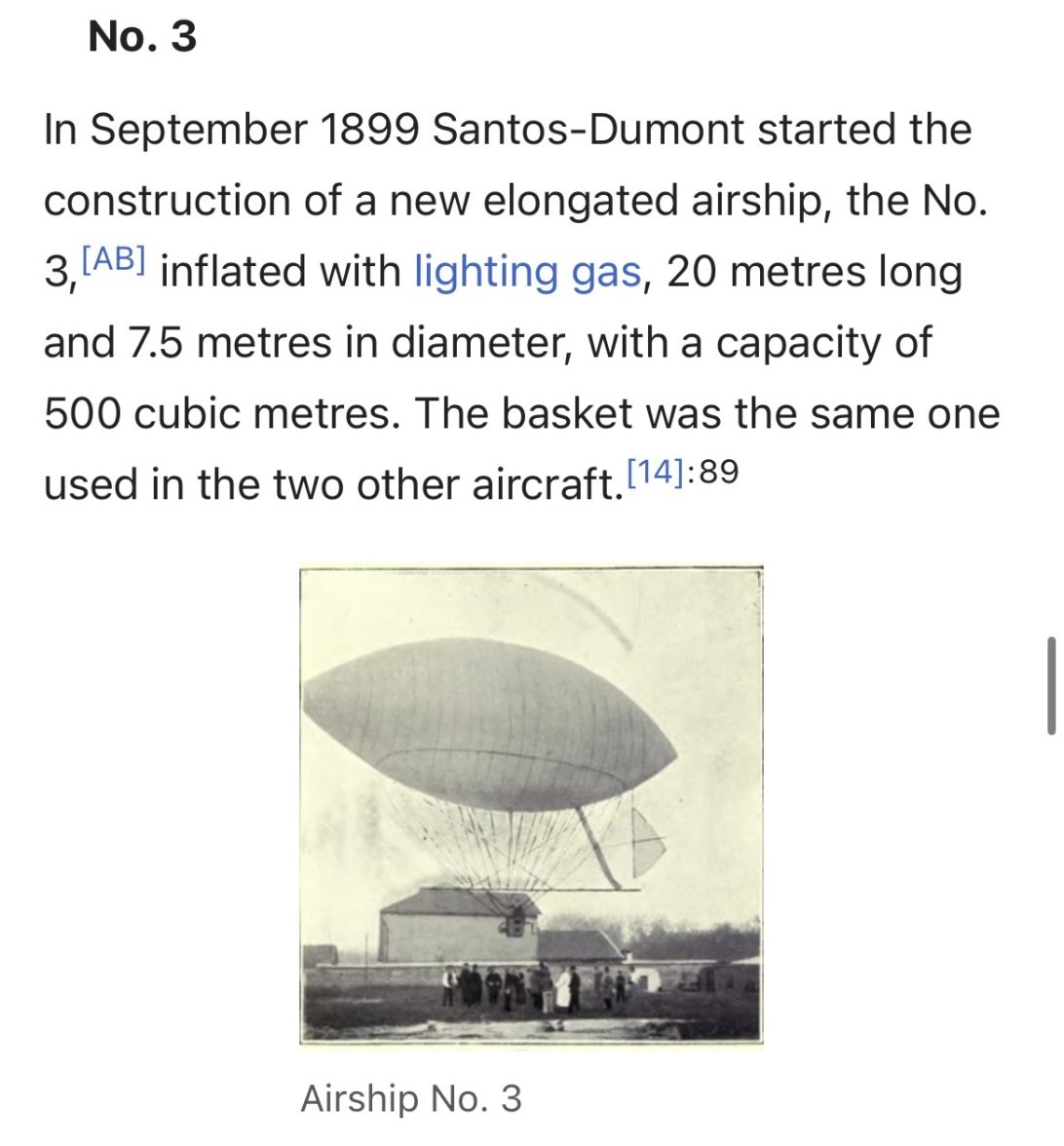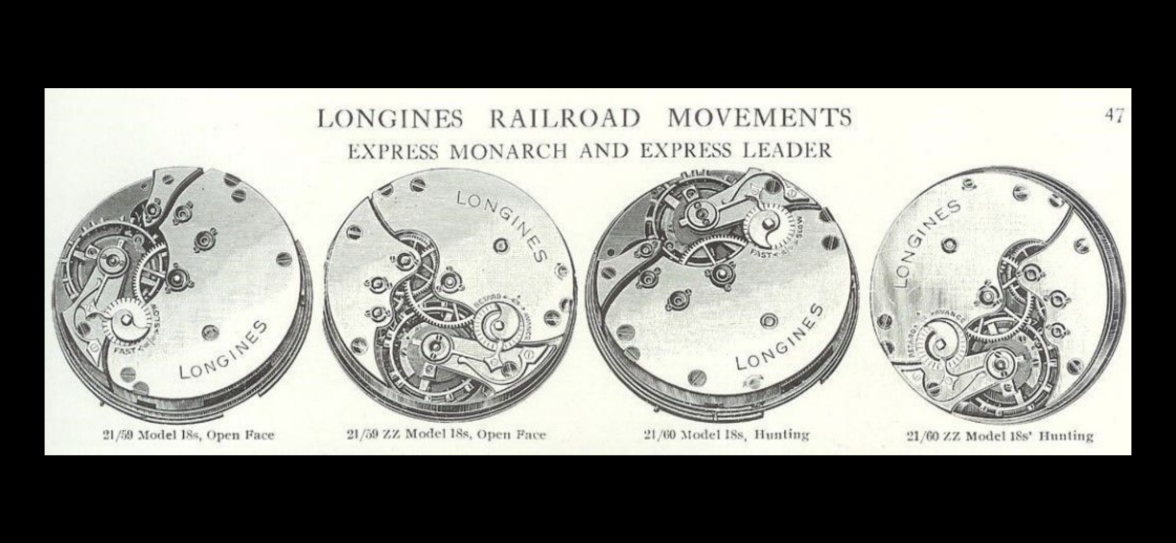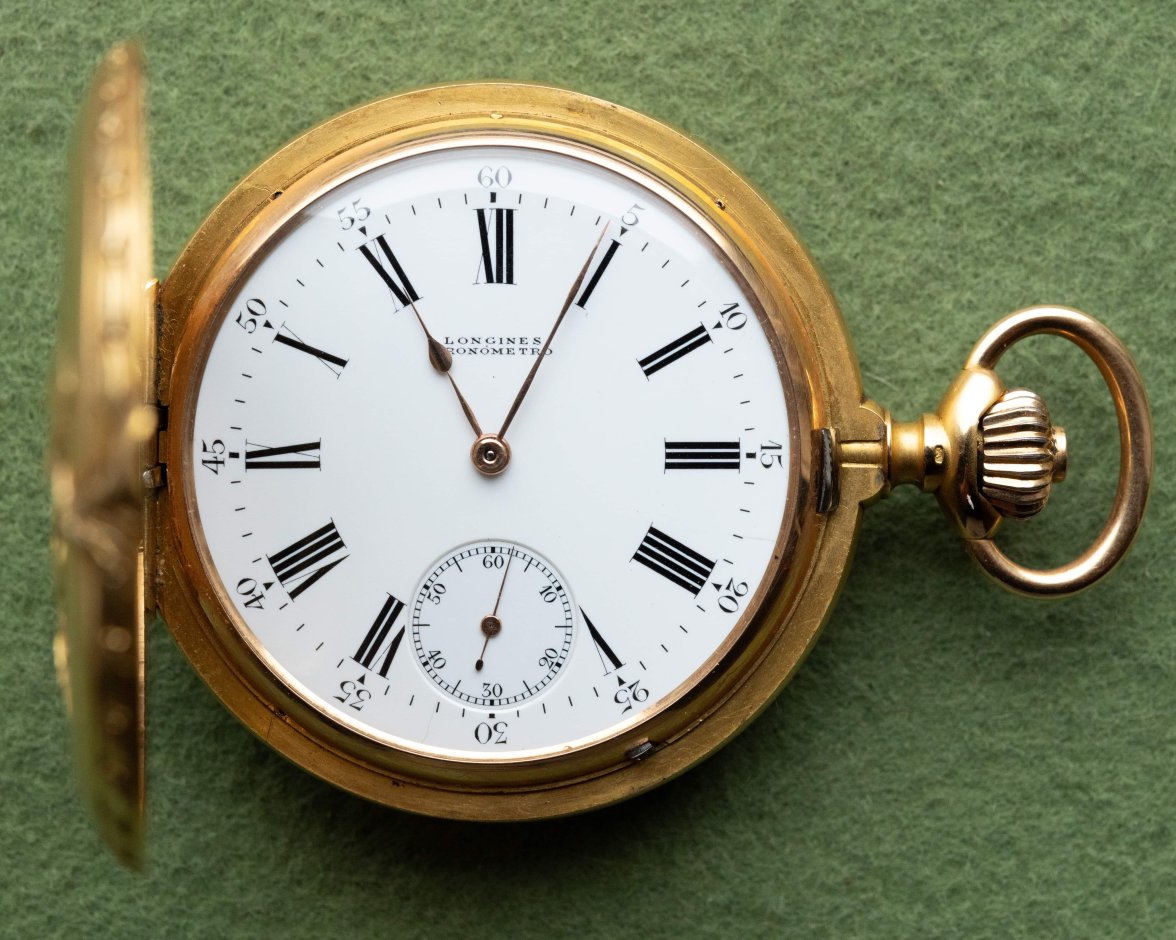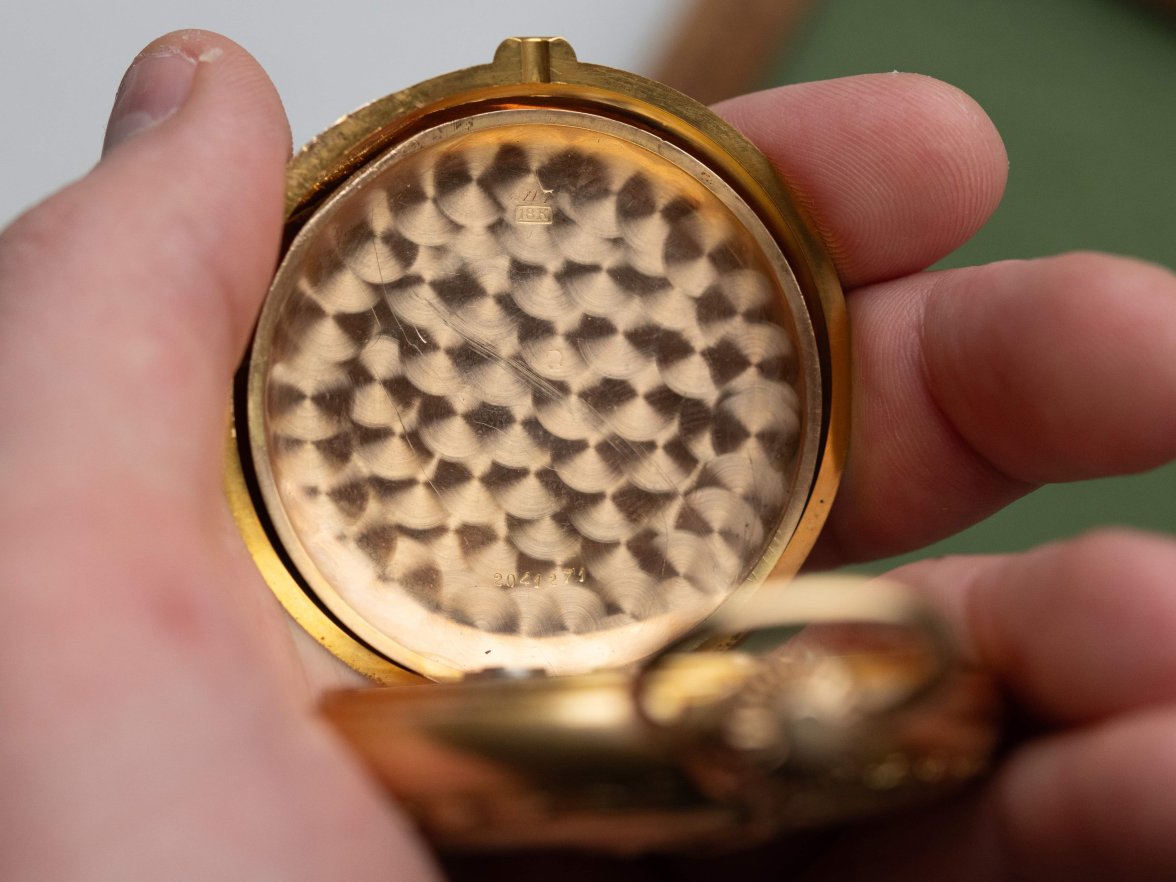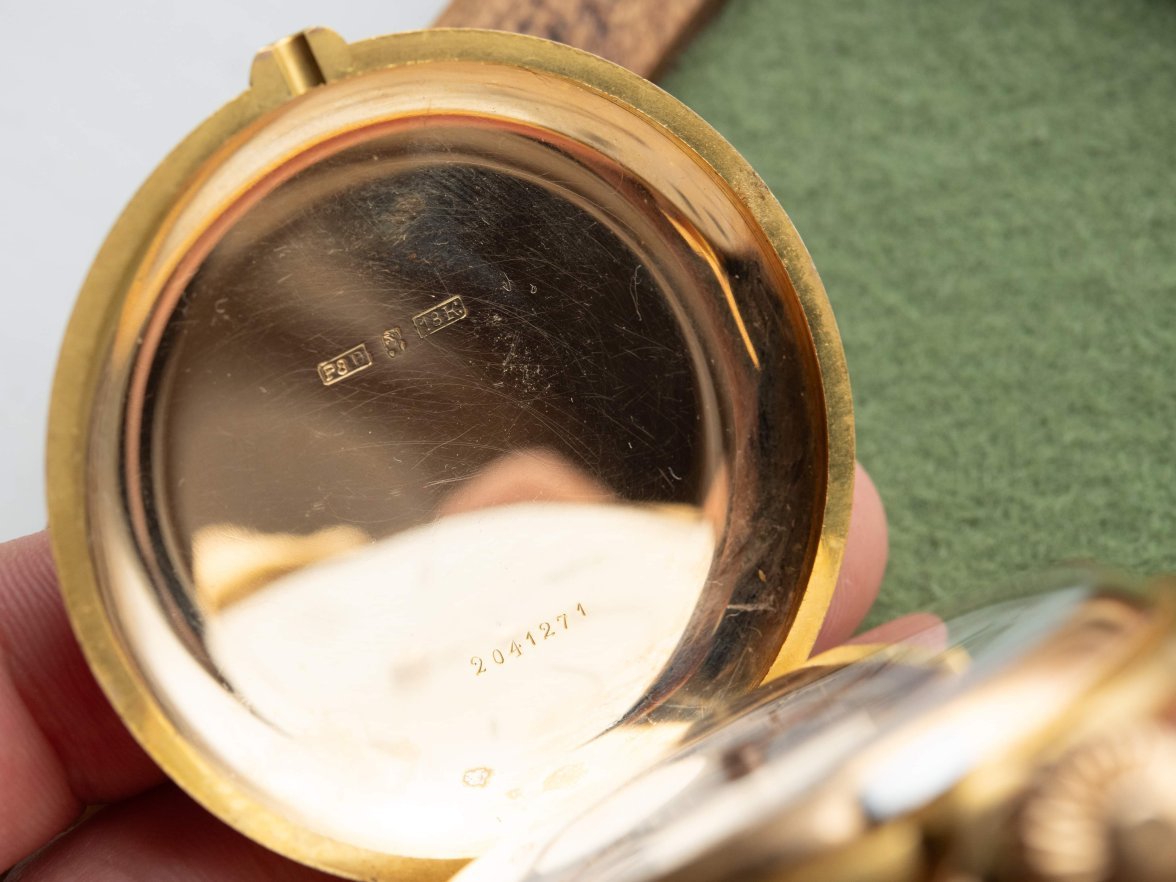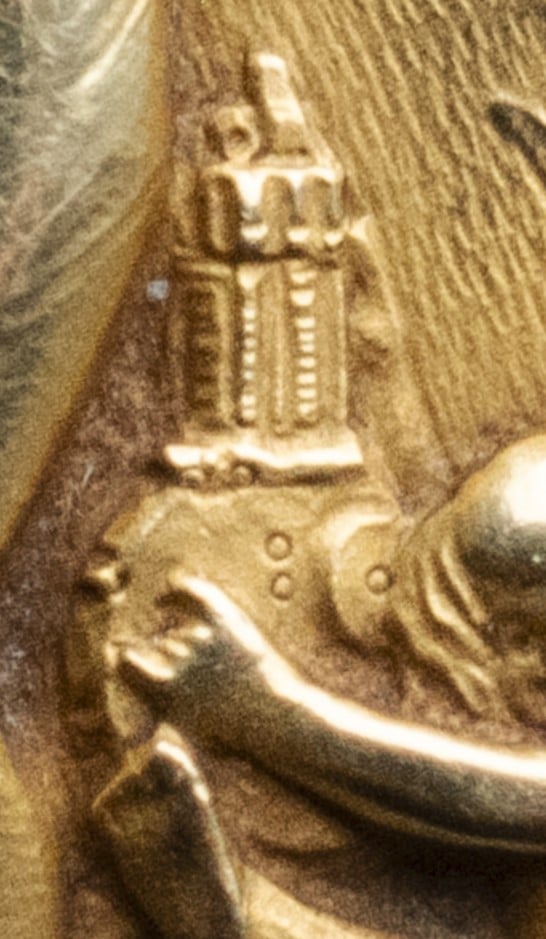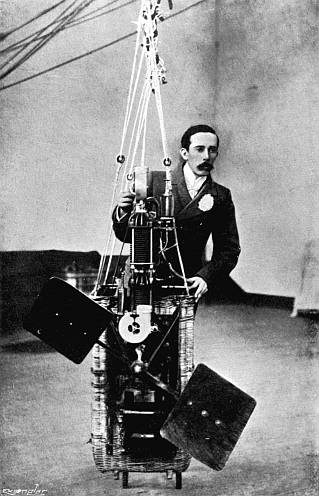J_pilot
·Hi all,
I wanted to share a recent acquisition with the OF community that I appreciate for its elegant craftsmanship, design, condition, and historical context (not to mention gold weight!).
It’s a full hunter “Cronómetro” in 18k yellow gold, delivered to Perusset & Didisheim in Buenos Aires on Feb. 4, 1911 (a year and two months before the Titanic sunk, as a benchmark reference!)
The first and most immediately striking aspect of this watch is the cover’s very fine relief carving of the classic “art nouveau woman” atop a globe, flanked to her right by a cherub with some kind of instrument, and to her left by what I believe to be a stylized airship. This airship is particularly interesting as its design mirrors contemporary prototypes by Santos-Dumont of Brazil (picture from Wikipedia below), amongst others. Asides from this being an early example of Longines’ ties to aviation, I find the juxtaposition of neoclassical imagery and (what was at the time) a cutting edge and world-evolving technology quite charming and unique.
Inside, the watch is no slouch either, with what was elsewhere marketed as a “Railroad Movement”, cal. 21.59. It has a beautiful snail cam regulator and gold screwed chatons across its 3/4 plate movement - certainly befitting of its “Cronómetro” title! The dust cover is similarly attractive, with the expected medals but also a reiteration of the chronometer branding.
The dial and original handset gave held up quite well for their age also - I happen to love the look of Romans on a clean enamel dial.
Overall, hoping this post serves as a record of this piece and any related discussion. I’d like to expand my research further (hopefully with some assistance from Longines), as there are still a few mysteries with this example:
- Does Longines have any written record of this piece having been chronometer tested, in-house or externally?
- Was this a commission/special order, or deluxe “off-the-shelf” offering?
- If special ordered, by whom?
- Is there any commemorative significance of the airship? This was a time of many firsts among aviation pioneers, and the balloon feats of Santos-Dumont and Jorge Newbery were surely points of South American pride at the time.
Anyhow, hope you enjoy the pics and please do chime in with any thoughts/info. I’m relatively new here and am constantly learning!
Juergen
I wanted to share a recent acquisition with the OF community that I appreciate for its elegant craftsmanship, design, condition, and historical context (not to mention gold weight!).
It’s a full hunter “Cronómetro” in 18k yellow gold, delivered to Perusset & Didisheim in Buenos Aires on Feb. 4, 1911 (a year and two months before the Titanic sunk, as a benchmark reference!)
The first and most immediately striking aspect of this watch is the cover’s very fine relief carving of the classic “art nouveau woman” atop a globe, flanked to her right by a cherub with some kind of instrument, and to her left by what I believe to be a stylized airship. This airship is particularly interesting as its design mirrors contemporary prototypes by Santos-Dumont of Brazil (picture from Wikipedia below), amongst others. Asides from this being an early example of Longines’ ties to aviation, I find the juxtaposition of neoclassical imagery and (what was at the time) a cutting edge and world-evolving technology quite charming and unique.
Inside, the watch is no slouch either, with what was elsewhere marketed as a “Railroad Movement”, cal. 21.59. It has a beautiful snail cam regulator and gold screwed chatons across its 3/4 plate movement - certainly befitting of its “Cronómetro” title! The dust cover is similarly attractive, with the expected medals but also a reiteration of the chronometer branding.
The dial and original handset gave held up quite well for their age also - I happen to love the look of Romans on a clean enamel dial.
Overall, hoping this post serves as a record of this piece and any related discussion. I’d like to expand my research further (hopefully with some assistance from Longines), as there are still a few mysteries with this example:
- Does Longines have any written record of this piece having been chronometer tested, in-house or externally?
- Was this a commission/special order, or deluxe “off-the-shelf” offering?
- If special ordered, by whom?
- Is there any commemorative significance of the airship? This was a time of many firsts among aviation pioneers, and the balloon feats of Santos-Dumont and Jorge Newbery were surely points of South American pride at the time.
Anyhow, hope you enjoy the pics and please do chime in with any thoughts/info. I’m relatively new here and am constantly learning!
Juergen
Edited:

